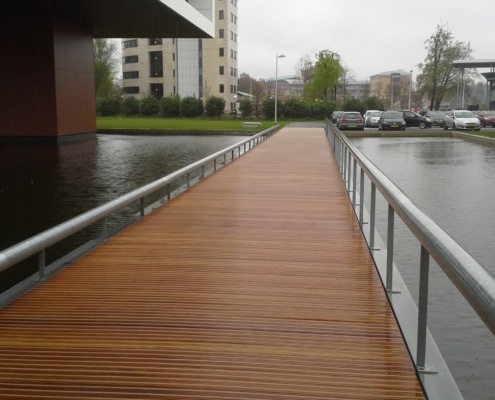Strength class and quality
When assessing wood types in the Netherlands, the European strength classes according to NEN-EN 338 are used. The strength class is indicated by the letter C for softwood and D for hardwood, followed by a number. This number corresponds to the representative value for the flexural strength parallel to the fiber, an important material property. These values form the starting point for constructors to determine the design value of the material. Bilinga falls within class D50, which corresponds to the highest design values for flexural strength, tensile strength, compressive strength, modulus of elasticity, etc.
Bilinga is divided into three quality classes according to the NEN 5480 standard: A, B and C. Class A places the highest demands on both strength and appearance, including aspects such as thread progression, tassels, cracks and deformations.
The Dutch standard NEN 5493 (formerly NPR 5493) contains eight categories for the use of Bilinga wood in civil engineering works and other structural applications:
- Walking decks/decking components
- Bridge decks and planks for jetties
- Construction wood
- Horizontal handrails
- Studded posts
- Sawn posts
- Round posts
Standards have been established for each category with regard to allowable imperfections, such as heartwood, knots, mechanical damage, cracks, sapwood and deformation over the entire length of the wood. In addition, there are standards for the moisture content and the performance of batch inspections.

















